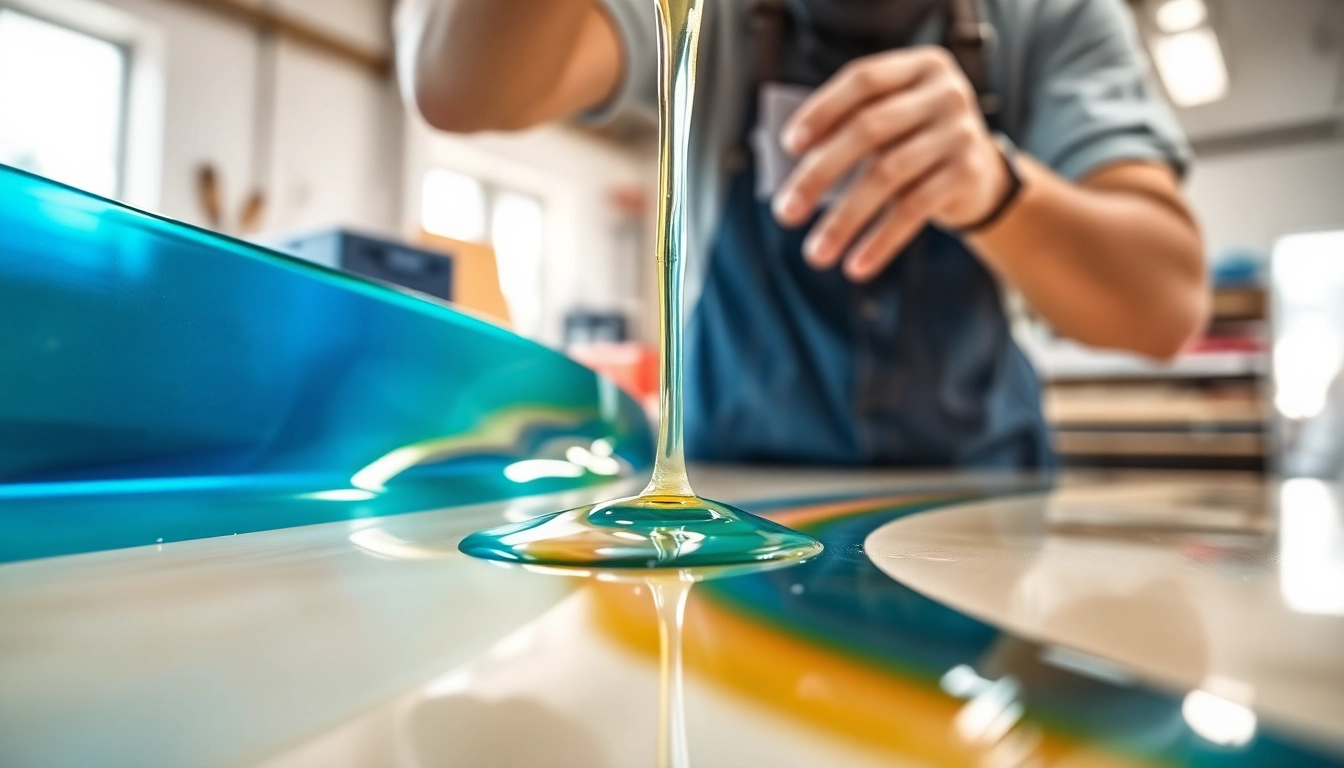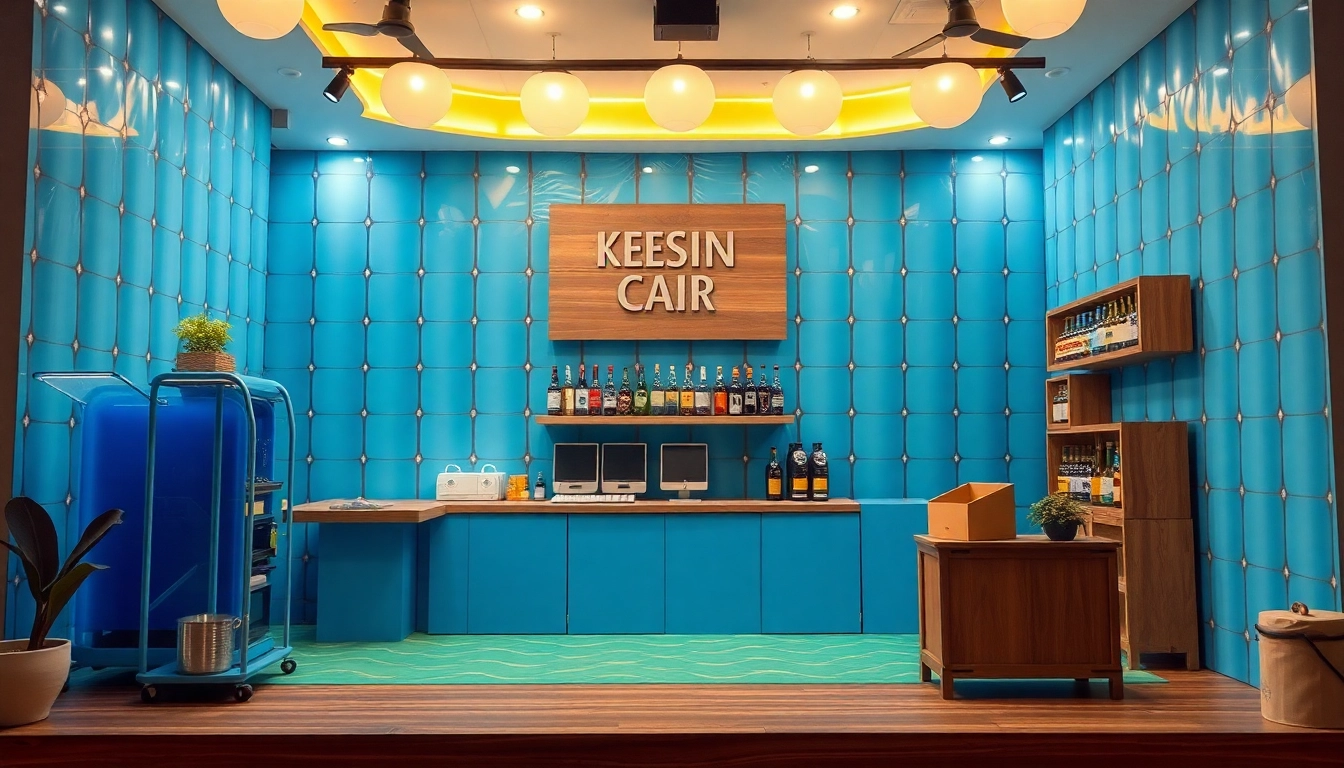Understanding Laminating Resin
What is Laminating Resin?
Laminating resin is a type of synthetic resin commonly used in composite materials to bond layers together, creating a robust and durable structure. This resin is primarily utilized in applications where the layering of materials, particularly fiberglass, requires a strong adhesive that remains flexible yet resilient after curing. With its exceptional bonding properties, laminating resin is essential in various industries, including boat building, automotive manufacturing, and construction.
The process typically involves applying the resin between sheets of fiberglass or other materials, which are then pressed together. The resin cures to form a solid matrix that encases the fibers, contributing significantly to the overall strength and rigidity of the final product. For more details about the specific types and applications, laminating resin is worth a closer look.
Types of Laminating Resin
There are a few prevalent types of laminating resin, each suited for different applications based on their unique properties.
- Polyester Laminating Resin: This is commonly used in marine applications due to its resistance to water and UV rays. It is cost-effective and suitable for a wide range of projects, including boat hulls and sports equipment.
- Epoxy Laminating Resin: Known for its superior bonding ability and resistance to chemicals and moisture, epoxy resin provides a stronger and more durable finish than polyester. It is ideal for high-performance applications such as aerospace and advanced marine constructions.
- Vinylester Laminating Resin: This combines the advantages of epoxy and polyester, offering excellent corrosion resistance and toughness, making it suitable for various challenging environments.
Key Properties of Laminating Resin
Understanding the inherent properties of laminating resin is vital for making informed choices during application. The key properties include:
- Adhesion: Laminating resins exhibit excellent adhesion to various substrates, which is crucial in multi-layer applications.
- Flexibility: After curing, laminating resins maintain some degree of flexibility, which helps prevent cracking and adds durability.
- Curing Time: The time it takes for the resin to cure can vary based on the type used and environmental conditions, affecting project timelines.
- Heat Resistance: Many laminating resins provide thermal stability, making them suitable for high-temperature applications.
- Chemical Resistance: This is particularly important in marine or industrial applications where exposure to harsh chemicals occurs.
Applications of Laminating Resin
Using Laminating Resin in Fiberglass Projects
Laminating resin is quintessential for fiberglass projects, where it is used to create a composite material that is lightweight yet exceptionally strong. Common applications include:
- Boat Building: The marine industry relies heavily on laminating resin to construct hulls and other components that require waterproof and impact-resistant properties.
- Automotive Components: In the automotive sector, laminating resins are used for body panels, reinforcing structures, and other elements that require reduced weight without sacrificing strength.
- Sports Equipment: Items such as surfboards and parachutes benefit from the lightweight yet durable nature of laminated fiberglass.
Given the critical nature of these applications, choosing the right laminating resin type is essential for achieving desired performance goals.
Marine Applications of Laminating Resin
The marine industry utilizes laminating resin to craft vessels that can withstand the harsh conditions of saltwater and corrosion. Key applications include:
- Boat Hulls: Laminating resin is widely used to form the hulls of boats, ensuring they are lightweight and buoyant while maintaining strength and durability.
- Repair Work: For ongoing maintenance, laminating resin helps repair damaged fiberglass areas, restoring hull integrity and performance.
- Custom Fabrications: Many boat builders create custom components, such as consoles or storage areas, utilizing laminating resin for structural integrity.
The robustness of laminating resin is necessary for safety and longevity in marine applications, where exposure to water and environmental elements is constant.
Laminating Resin in Model Building
Model builders often employ laminating resin for its versatility and need for precise detail. In the realm of model construction, laminating resin serves various purposes, such as:
- Scale Models: From architectural models to miniature replicas of vehicles and ships, laminating resin can encapsulate details, ensuring longevity and resilience.
- Prototype Development: Creators can apply laminating resin in prototypes to achieve a durable and presentable finish for testing and demonstration.
- Artistic Projects: Artists utilize laminating resin in mixed media pieces, allowing for the encapsulation and preservation of intricate designs.
The swift curing time combined with the desired finish quality makes laminating resin a favored option in the model building community.
Best Practices for Working with Laminating Resin
Preparation Steps Before Application
To achieve optimal results with laminating resin, proper preparation is key. Follow these essential steps:
- Surface Preparation: Ensure that the surfaces to be bonded are clean, dry, and free of debris. Any contaminants can hinder adhesion.
- Temperature Control: Laminating resin cures best within specific temperature ranges. Make sure to work in a climate-controlled environment to ensure consistency.
- Material Selection: Choose appropriate fiberglass fabrics or substrates that align with the intended application for optimal performance.
Mixing and Curing Techniques
Proper mixing and curing are critical to the success of your project. Here are some guidelines:
- Accurate Measuring: Use precise measurements for resin and hardeners to achieve the correct chemical reaction.
- Mixing Method: Mix the resin in a clean container and use a paddle or mixer to combine thoroughly without introducing air bubbles.
- Curing Time: Respect the manufacturer’s guidelines for curing times. For best results, allow the resin to cure undisturbed in a stable environment.
Common Mistakes to Avoid
To maximize the effectiveness of laminating resin, avoid these common pitfalls:
- Ignoring Safety Protocols: Always wear protective gear, including gloves and goggles, to safeguard against chemical exposure.
- Poor Ventilation: Ensure adequate ventilation in your workspace to mitigate the inhalation of fumes emitted during mixing and curing.
- Inconsistent Application: Strive for even application of resin layers; too thick or too thin layers can affect curing and performance.
Safety Considerations with Laminating Resin
Protective Gear for Laminating Resin Use
When working with laminating resin, it is crucial to prioritize safety. Appropriate protective gear includes:
- Gloves: Chemical-resistant gloves can protect the skin from potential irritation and allergic reactions.
- Safety Goggles: Eye protection prevents harmful splashes from reaching the eyes during mixing and application.
- Respirators: When working in poorly ventilated areas, a respirator can help prevent inhalation of harmful vapors.
Ventilation and Workspace Setup
A well-ventilated workspace is essential for ensuring safety while working with laminating resin:
- Good Airflow: Ensure that your workspace is equipped with adequate ventilation systems or open windows to promote airflow.
- Clean Workspace: Maintain a tidy area to minimize accidents associated with spills, trip hazards, and contamination.
- Proper Waste Disposal: Follow local regulations for the disposal of resin waste or containers to prevent environmental damage.
Disposal and Environmental Guidelines
Correct disposal methods for laminating resin are vital for environmental protection:
- Hazardous Waste Disposal: Many resin components can be considered hazardous. Ensure compliance with local laws for hazardous waste disposal.
- Double-check Curing: Ensure that the resin is fully cured before disposal to minimize environmental impact.
- Avoid Water Contamination: Never dispose of uncured or partially cured resin in water bodies or drainage systems, as it can cause pollution.
Advancements in Laminating Resin Technology
Innovations in Laminating Resin Formulations
The field of laminating resin technology has seen significant advancements, primarily focusing on enhancing performance and sustainability. Innovations include:
- Bio-based Resins: These environmentally friendly options utilize renewable resources, reducing reliance on petroleum-based products.
- Hybrid Formulations: Combining the best properties of various resins to create a product that suits multiple applications while improving performance metrics.
- Low-Emission Resins: Development of formulations that emit fewer volatile organic compounds (VOCs) during the curing process, promoting a safer working environment.
Future Trends in Laminating Resin Applications
Looking forward, several trends are anticipated to influence the use and development of laminating resin:
- Increased Use of Automation: Automation in application processes can ensure consistency, accuracy, and better safety measures.
- Greater Emphasis on Sustainability: As environmental concerns grow, the demand for sustainable laminating resin options is likely to increase.
- Smart Materials: Integrating smart technology into resin formulations to enhance performance and enable real-time monitoring of the materials.
Comparative Efficiency of Laminating Resin Types
Different laminating resin types showcase their unique efficiencies based on specific applications:
- Epoxy vs. Polyester: While epoxy offers superior adhesion and chemical resistance, polyester remains a cost-effective alternative for many applications.
- Vinylester vs. Epoxy: Vinylester comes with lower cost and good performance in corrosive environments, while epoxy provides unparalleled strength.
- Flexibility and Impact Resistance: By comparing various resin types, users can select the most efficient option suited to their project’s needs.



